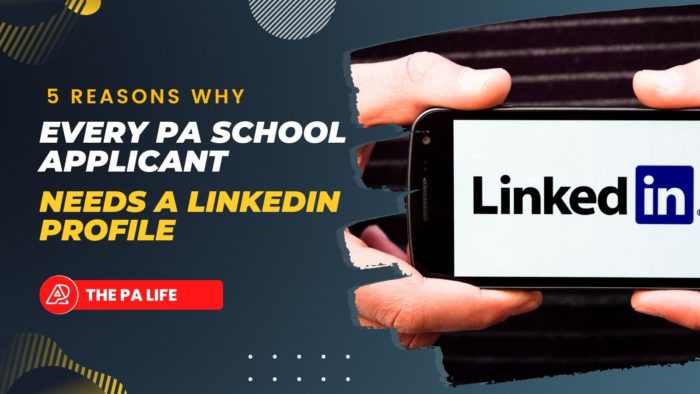
A friend of mine shared a meme not too long ago that said something like "the best ways to reach me, ranked." From best to worse they were as follows:
- Text
- Voice call
- DM
- Sticking your head out of a car window and yelling my name from anywhere on the planet
I totally understood that sentiment. I would occasionally get a notification that someone had contacted me via LinkedIn, and I'd think, why? It felt like Facebook with duller content. But here's what happened...

Do I REALLY need a LinkedIn Profile to apply to PA school?
I have been a professional writing professor for most of my working life and I have always made a point of asking students for details when they get jobs.
Over the past decade or so, the answer to "how did you find that job?" has increasingly been "LinkedIn."
And more and more of them were also saying that the employer actually initiated contact with them. So, I thought, I guess I'm going to have to figure out what this is about, and I did some professional development training.
People, my mind was blown. I have seen the light. Now when my clients ask me "do I really have to have a LinkedIn?" I can tell them not only that the answer is yes, but how and WHY.
A lot of these "hows" and "whys" are most relevant to job seekers, but aspiring PA students need them, too. I know what you're thinking: I'm already up to my neck in personal statements, supplemental essays, and reworking my resumé and that's on top of taking classes and working. How can I do one more thing?
LinkedIn is a tool that can do a lot of work for you with a minimum investment of your time upfront. Here are FIVE reasons you need to have a LinkedIn profile.
5 Reasons Every PA School Applicant (and Graduate) Must Have a LinkedIn Profile
1. People expect it

Not that long ago, including your physical or mailing address on resumés and business correspondence was standard. That was a holdover from the days when these documents were exchanged via snail mail.
While that occasionally still happens, it's increasingly rare. So, if no one needs your physical or mailing address to contact you, why does it need to be taking up space?
The whole purpose of including contact information is so that people can contact you. Give them options--a phone number, an email address, your LinkedIn URL, other social media, or online publications.
In cases where your resumé is available publicly online, like websites and digital portfolios, sharing a physical location can be a security risk. A cardinal rule of workplace writing is to put information where readers expect to find it. Having that LinkedIn profile in your contact information is where they expect it.
2. It shows the world that you are, in fact, human
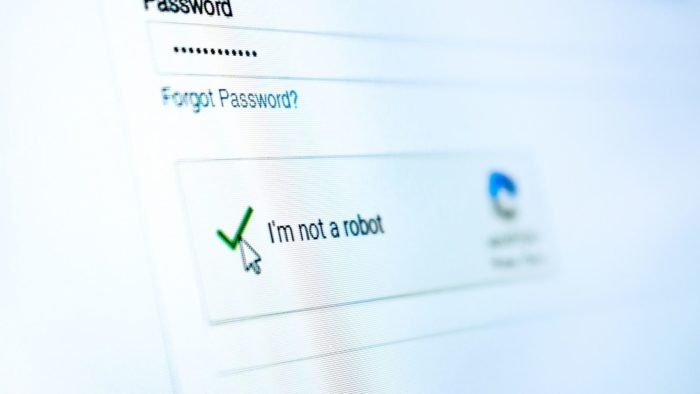
Sadly, readers have good reason to suspect that anyone corresponding with them online is a bot.
LinkedIn provides verifiable information about you, links to places you've worked, and even accolades from people who've worked with you and can not only confirm your education, experience, and skills but provide written endorsements.
Can scammers get around this stuff? Yes, they can. And, if the FBI's page for reporting online scams is to be believed, and I think it is, it happens. The scams, however, are scammers pretending to be potential employers, so, as an individual, you are more credible with a LinkedIn profile.
3. It shows them your face

It's not a settled issue, but I am on the "don't put your photo on your resumé" side of the debate. Here's why.
You can file this under "Don't offer answers to questions that it would be illegal for employers to ask."
Employers and academic program committees know that they aren't allowed to ask you questions associated with reasons to discriminate: your age, ethnicity, marital status, religion, political leanings, ability, etc.
You don't want to be chosen, or not chosen, based on the way you look over your qualifications. Research shows clear biases associated with physical appearance. However, once they've read your resumé and other application materials and they've decided that they already like you, they can click on that LinkedIn profile and see the high-quality photo you've added.
Choose a photo in which you look professional. I am forever going on about how we want committee readers and potential employers to envision you in ACTION--doing the things that you are claiming you can do.
So, for aspiring PAs, a nice clear one that shows your scrubs, lab coat, or other signals that you are working in healthcare can help them create this mental picture.
4. It adds layers to what people can learn from your resumé

The resumé is a specific genre that serves a specific purpose: to give readers a skimmable overview of your education, experience, skills, and other discipline-specific qualifications (for pre-PAs, for example, shadowing).
Resumés get you past the gatekeepers and into the interview seat where you can really let people get to know you. That's why resumés can feel so stiff and impersonal; they're meant to be in order to make readers' reading tasks easier. Their main task is to help readers sift out only the relevant information.
While the tone of the resumé is business-like and informational, the tone of a LinkedIn profile is just a bit more casual and can show more of who you are.
For those of you on the PA path, this doesn't mean you can get too informal; you still have to sound like a credible healthcare professional. You can, however, add a short bio that says something like "BioChem BS, MA, and aspiring PA with a passion for taking medicine to the streets" that wouldn't fly on a resumé.
5. It acts as a repository
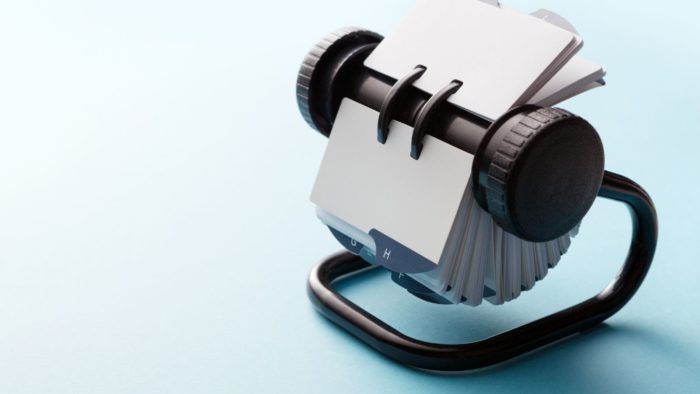
It just takes a few minutes to add a photo, heading, bio, education, and relevant work experience, but you can also add a downloadable copy of your resumé and all kinds of other stuff. Think of it as a one-stop-shop for your accomplishments.
You can link or upload articles you've written or co-authored, research projects, photos or stories from volunteer work you've done, digital media, and other content that doesn't work with a resumé.
Having it linked and/or downloadable makes it easy for your reader to locate--just a click! If you have a website, blog, or online portfolio, you can link those, too, but again, keep them relevant. If you've got a sideline as a dog trainer or sneaker designer, make a separate account for that identity.
The 5 Essential Elements of a Successful Pre-PA LinkedIn Profile
So, what are the must-have elements of a successful LinkedIn profile for people on the PA path?
Even though I just listed a ton of stuff that you can add to your LinkedIn profile, you don't actually need any more than just the basics. You really just need these five things:
- Your name
- Contact info
- A short bio in the heading
- A photo
- A resumé
Pro-tips for optimizing your LinkedIn profile for success
1. Follow your college, university, program, and/or professional training organizations.
If they have alumni groups, follow those, too. Here's why. LinkedIn will show you others who've attended those same institutions. You can contact them with questions about programs, fellowships, and jobs. When they can see that you're both former Banana Slugs, Horned Toads, or Sun Devils, they'll be more likely to respond and be helpful. In fact, I recommend starting your notes with something like "Howdy, fellow Oregon Duck!" Those connections will help you build your professional network, which will serve you both immediately and in the long term.
2. Follow organizations and employers you'd love to work with.
If you've always dreamed of working with the NIH, Doctors Without Borders, or the Mayo Clinic, follow them. Again, you'll get to see if you know anyone who works with them, ask questions, and build your network. You'll also see news about their organization, such as fellowships, grants, and employment opportunities--often before that information is widely available.
3. Edit your profile URL.
LinkedIn assigns you a default URL that is long and typically contains an unwieldy character string. If you go to your profile, you will see a link in the upper right corner of the page that says, "Edit Public Profile & URL." Click that. That click will give you a box in the same upper right corner that says, "Edit your custom URL." From there, you can use a version of your name to add to your resumé's contact section, emails, online portfolios, business cards, and more.
4. Be aware of how you want readers to think about any location information you include.
Some programs or employers are looking to limit applicants by location. So, for example, if you're applying for a position in New York City that is going to privilege applicants who live in the immediate area because they don't want to deal with relocation issues, be aware that having your location on your profile--or NOT--could be a factor in whether-or-not your application is considered. This is also common in areas with other geographic focuses. Many programs and employers want applicants who are familiar with the issues that are unique to their regions, cultures, or demographics. If you want to serve underserved rural communities in the desert southwest, stating that explicitly in your bio will help you make those connections.
Now go create (or update) your LinkedIn profile today!
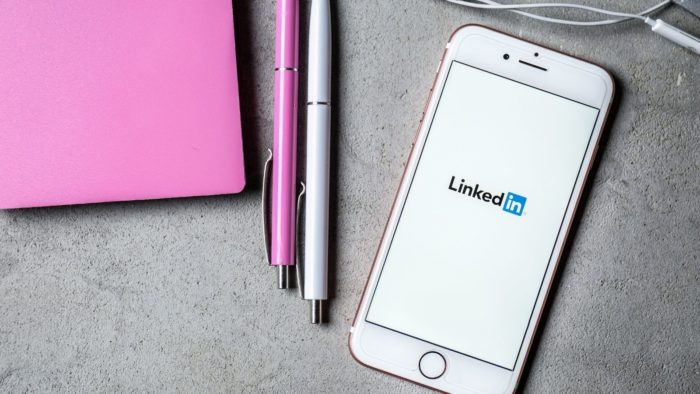
Trust me, I know, LinkedIn isn't as visually appealing, as socially engaging, or as much fun as some other forms of social media but putting just a bit of effort into creating a professional profile can yield a solid return on your time investment.
Need help creating a professional PA LinkedIn profile?
LinkedIn Profile Writing and Editing Service for PAs
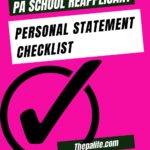



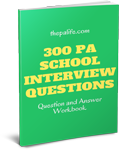

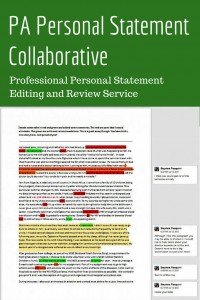
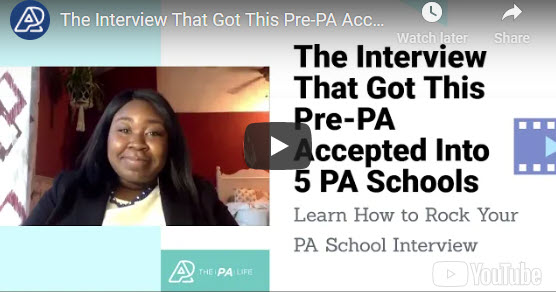







Leave a Reply